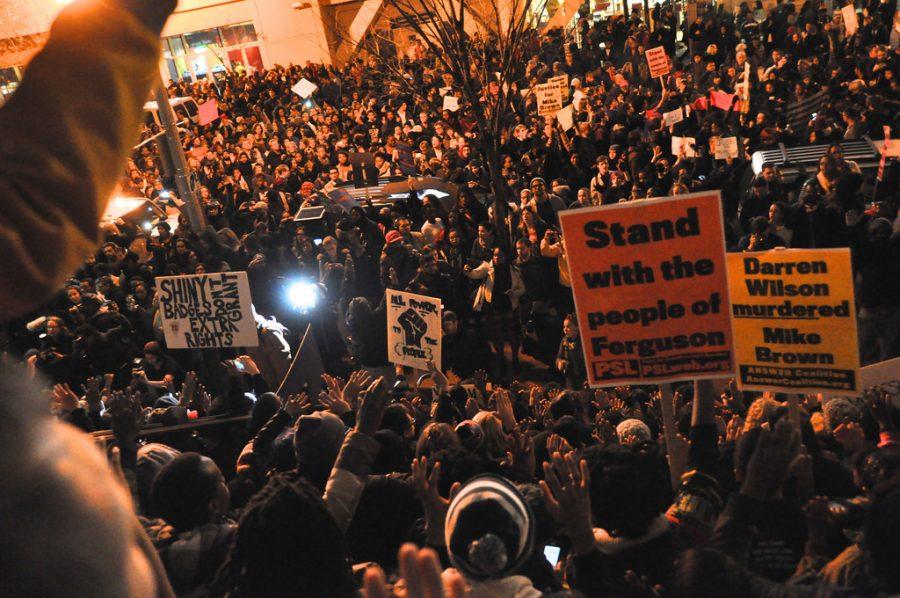When Do Police Officers Cross the Line?
January 29, 2017
Over the last year, there have been repeated incidents of protests breaking out across the country; every time protesters take to the streets, they are met with armed police. As these situations increase in number, debate has raged in regards to when and where the use of force is permissible. Shocking images such as the iconic photo of an unarmed man being faced with a fully armed squadron of police officers have led some to question how powerful the police need to be.
It is a good idea to set some context for the current capabilities of the police. Generally speaking, police departments have different sections to deal with different situations. A department may have patrol cops who are usually armed with a sidearm, a shotgun (on some occasions), a taser and a baton. For more serious incidents, police will rely on a Special Weapons and Tactics (SWAT) team which can carry anything from sniper rifles and submachine guns to battering rams and grenade launchers. In the middle of these two extremes exists the riot police. The riot police consist of normal police officers who are equipped with a wide range of gear to confront a group of protestors. This group is not meant to use lethal force and is equipped with riot shields, batons, armor, tear gas, pepper spray and, occasionally, rubber bullets. While all of these weapons can cause pain, they have a limited ability to kill. Their focus is more on controlling a crowd during a riot.
Police officers are governed by a simple principle. They can only take action when they feel that their lives or the lives of others are in danger. Until that line is crossed, an officer should not use lethal force. Recent incidents have put this doctrine under strain as peaceful protests have often turned violent. The true question in this debate is: when is it justified for the police to use force against protesters?
There is no doubt that the police have become increasingly militarized. The history of these upgrades comes from the War on Drugs declared in 1971 and then later on after the September 11 attacks. Equating drug dealers with organized crime bosses, police stations across the country were given additional funding to enforce the law. Most of the time, the equipment is left unused, but during a riot, it all comes out. . Police are meant to intimidate criminals with their solid black clothing, weapons and vehicles. But intimidation is not the most effective approach when dealing with protesters. Police need to be seen not as an oppressive force, but more as a helpful one. The optics of militarized police is bad because it contribute to a growing perception that the government has overstepped its boundaries.Police must find a way to work with protest organizers in setting guidelines for protests so that police do not feel the need to use force.
The blame for police confrontations does not fall only on the officers. Some recent protests seem to believe that they will be better heard and understood if they take more drastic action. This was seen in Ferguson, where protesters destroyed vehicles, buildings and attacked police officers. These incidents are all crimes, actions that police must prevent. It is crucial that protesters realize that carrying out crimes will not allow them to succeed.. This is a brutal truth. Protesters lose the chance of leading a successful revolt if they turn to violence. The only way to air grievance is through proper procedure and peaceful protest. Violence only breeds enemies and splits sympathizers.
In conclusion, police need to be less willing to use lethal force. They should maintain order and prevent damage in the first place. However, it is also the responsibility of protesters to respect the law and protest within its confines. If they do not, their safety cannot be guaranteed. Above all, members of Congress need to answer to the nation and its grievances which cause these protests, instead of to their gerrymandered districts.




